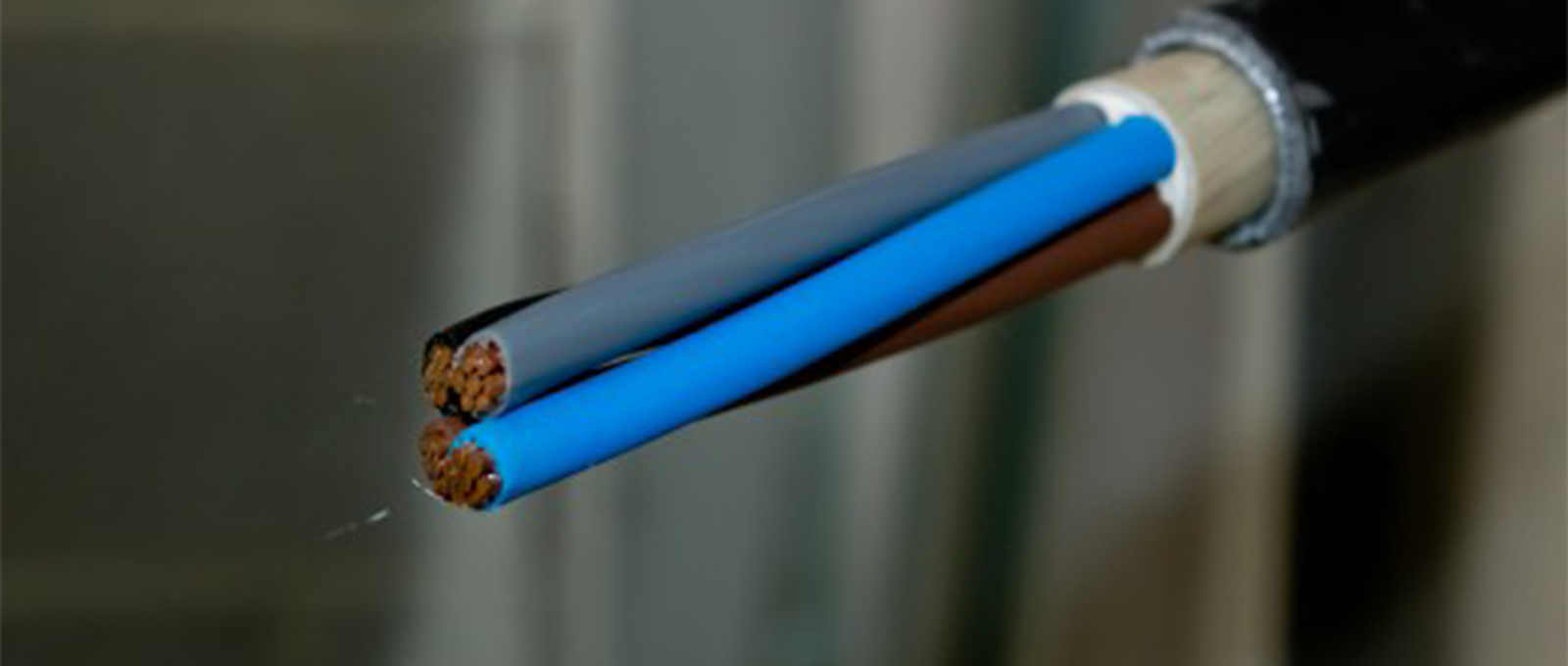A Short Guide to Armoured Cables
Armoured cables are low-voltage power or control cables that are designed for use in mains supply. Discover more in our blog.
Whilst the weight and rigidity of armoured cables can make them hard to handle and time-consuming to terminate, they are essential in applications where unarmoured cables may be prone to damage and require containment protection, i.e., conduit or trunking.
What is armoured cable?
Armoured cables are low-voltage (LV) power or control cables that are designed for use in mains supply at a maximum 600/1000 V.
As the name suggests, armoured cables act as bodyguards for electrical circuits. Armoured cables, also known as steel wire armoured (SWA), or booklet armoured cables, can be used indoors and outdoors. Indoor armoured cables are typically found in places such as plantrooms, where cables may be susceptible to damage from heavy machinery. Outdoor armoured cables also need to withstand temperatures, harsh weather conditions, mechanical stresses, and third-party damage.
Where can you use armoured cables?
Armoured cables are typically used for fixed power installations. Here are some potential applications for armoured cable:
• Hospitals
• Offices
• Plant rooms
• Motor Control Centres (MCC)
Clause 522.8.10 in BS 7671 requires that cables buried in the ground shall incorporate an earthed armour. This is because when the ground is opened again for maintenance, an unarmoured cable might be hit by an excavation plant or even a spade, and damaged, which without any earthed protection, leads to an electric shock.
What are the different types of cable armour?
There are two main types of armoured cables:
• Aluminium wire armoured (AWA)
• Steel wire armoured (SWA)
AWA cable
Single-core power cables for AC voltages will incorporate a layer of protective aluminium armour (AWA), never steel. This is because the current produces a magnetic field in a single-core cable, which induces an electric current in any ferromagnetic armour material, such as steel, that could lead to the cable overheating.
If this were to happen, the 'magnetic losses' would be prohibitive and massively de-rate the cable. The cores will also physically repel each other. (You can read more about this in section 521.5.2 of the 18th edition of the Wiring Regulations, BS 7671:2018.)
SWA cable
For multi-core cables, galvanised steel wire armour (SWA) is used. Magnetic fields are not an issue in multi-core cables as the currents in a cable with two or more cores will exert opposite magnetic forces which have a cancelling effect on each other, so that no magnetic flux is produced in the cable’s steel armour.
Typically, SWA cables are constructed with class 2 stranded plain annealed copper wire conductors to comply with BS EN 60228. These are covered by an extruded layer of cross-linked polyethene insulation. The insulated conductors are then ‘laid-up’ or helically wrapped together, and a bedding layer is extruded on top.
The whole assembly is then enclosed in a layer of armour to provide mechanical protection. A PVC outer sheath provides additional protection from sunlight and water.
The Prysmian XLPE insulated, PVC sheathed SWA and AWA cables are manufactured in accordance with BS 5467.
Terminating an armoured cable
Armoured cables can be particularly tricky to terminate. It is time consuming operation to strip back all the different layer as well as the armour. Specialist tools can help speed the process, but otherwise it’s necessary to remove the cable sheath and cut through every single armour wire encasing the cable.
Once the armoured layer has been removed, the bedding layer is carefully cut back so as not do damage the cable cores, and the insulation can be stripped from the cable cores to allow the cable to be terminated.
Cutting the bedding layer can be a fiddly task if the cable is poorly made or if the bedding layer has become stuck to the cores’ insulation. Insulation can be damaged by removing bonded bedding, through excessive use of tools in tight spaces.
It’s important to seal the termination of an armoured cable against the ingress of airborne particles, moisture or even gas, with a metal gland. BW-type glands are used for indoor applications, while CW-type glands are suitable for outdoor applications. Particular care needs to be exercised when specifying glands for use on cables in hazardous areas. Finally, it’s also important to earth a metallic gland as this will earth the armour.



